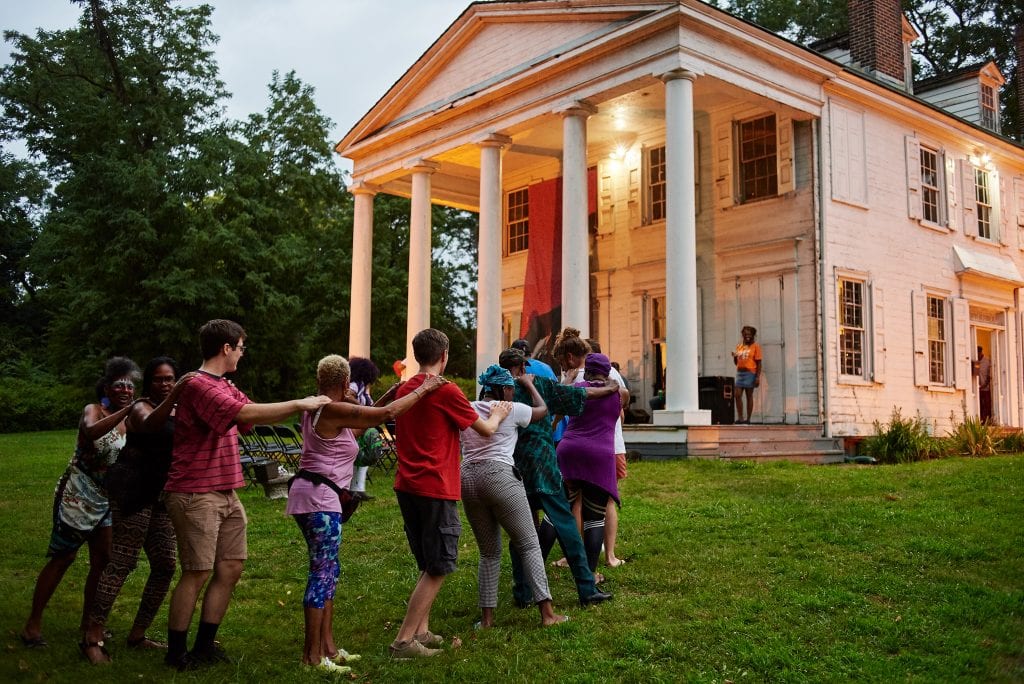
A conga line at the Hatfield Family Reunion held by Fairmount Park Conservancy, July 2018. Photo by Albert Yee
If you ask residents of Strawberry Mansion what their neighborhood’s biggest strength is, the answer is clear: It’s the people. A longstanding neighborhood in North Philadelphia, Strawberry Mansion has a housing stock that dates as far back as the 1860s. A neighborhood with natural and defined boundaries, it lies east of the 2,000-plus-acre Fairmount Park, the heart of Philadelphia’s park system. To the north are Laurel Hill, Mount Vernon, and Mount Peace cemeteries near Lehigh Avenue, and to the southeast are railroad tracks that form part of Amtrak’s Northeast Corridor.
Philadelphia is a city of 1.6 million people. Forty-one percent of that population is Black, 35 percent white, 15 percent Hispanic or Latinx, and 8 percent Asian. Although its population has been on a steady rise after a half century of decline, and it’s adding jobs while the unemployment rate falls, the city’s poverty rate has stood stubbornly at around 26 percent for five years, according to a 2019 report by The Pew Charitable Trusts. This ranks among the highest in big cities in the nation. In the Strawberry Mansion neighborhood, where the population is predominantly Black and low-income, the poverty rate is nearly double that of the city. Yet the population is also facing, among many other challenges, fears of displacement and increasing real estate speculation, despite a relatively high homeownership rate.
I do not live in Strawberry Mansion, so the history of the neighborhood is not mine to tell. What I do know has been gleaned from the research and work I’ve done as special projects coordinator with the Fairmount Park Conservancy, a nonprofit organization that works to bring Philadelphia’s parks to life. We improve and steward the parks, enhance their historic and cultural assets, and support the communities they serve. In Strawberry Mansion, I’ve partnered with neighborhood-based organizations, and met people who have lived there all their lives, those who’ve seen the neighborhood through times of joy and violence, growth and decline, unity and trauma, and are ever more resilient because of it.
At the Fairmount Park Conservancy, we know that parks are only as strong as the communities they serve. We also know that investments in public space can provide much-needed benefits to neighborhoods in need, and that they can also create unintended consequences that accelerate rising costs and economic and cultural displacement in these same neighborhoods. Through the Conservancy’s arts and culture program, which was funded by a $3 million ArtPlace America Community Development Investments (CDI) grant, we developed new arts-based engagement strategies and partnerships to strengthen our community development efforts and ensure that current residents have a hand in shaping park improvements.
This investment gave us the opportunity to implement programs and strategies that were new to us, like partnering with artists on short- and long-term projects, presenting site-specific artwork and art exhibitions, and creating artist residencies within the park. Ultimately, this three-year CDI journey helped us begin using arts and culture as a framework to advance park projects that reflect and strengthen the cultural identity of their surrounding communities, and to adopt more equitable engagement and planning practices as an organization.
Beginning the Journey
We began our journey by experimenting with smaller-scale projects to bring awareness to different aspects of Philadelphia’s park system and to learn how people really use these public spaces. One early venture engaged a diverse group of artists to create bird houses that were both authentic to the artists’ creative practice and habitable for the different bird species that favor Philadelphia’s urban meadows and waterways. First on view in an exhibition at one of Fairmount Park’s historic houses, these bird houses for tree swallows, kestrels, and wood ducks, among others, were later installed throughout the 2,050-acre park. We hosted bike tours so visitors could find each one and learn more about the critical role that meadows play in an urban ecosystem. Another early exercise at the Oval, a returning pop-up that transforms a surface parking lot on the iconic Benjamin Franklin Parkway into a summertime destination, challenged residents to create a model of Fairmount Park—in the form of a massive chocolate cake. Spearheaded by youth-centered local organization Public Workshop, this effort required true collaboration by participants, who spanned a range of ages and perspectives. This atypical modeling exercise inspired folks to reveal both individual and shared experiences of Philadelphia’s signature park.
By 2017, after a year of experimentation, we wanted to lay the foundation for deeper exploration, more expansive partnerships, and longer-term projects. Having already established a geographic focus on Fairmount Park, we zoomed in even further on the eastern section that sits adjacent to Strawberry Mansion—an area where we have worked for several years and where we have experienced both success and setbacks.
This was a rare opportunity to re-think the entire project pipeline, from initial conception to final delivery, with particular focus on how we managed the process from start to finish. We wanted to flip the tired narrative that framed Strawberry Mansion as a neighborhood of challenges, of problems that need fixing, and instead move forward based on strengths—its rich history, culture, and most importantly, the people who call it home. A strong goal, with just one obstacle—we had to figure out how to actually do it. One of the keys to getting there was creating a Community Advisory Committee.
The formation of the Community Advisory Committee was essential because we knew that we were not experts on Strawberry Mansion. And as an organization with financial resources, working in a marginalized community whose story is so often told by others, we recognized that we should not be the ones making judgments on what holds value there. The committee was charged with guiding the use of these resources, co-creating arts-based projects with us, and widening our outreach efforts in the neighborhood. In forming this group, we asked community leaders from various neighborhood-based organizations, folks who have deep ties to Strawberry Mansion and either live or work there, to join this venture. We cast a wide net, with an original group of 10 members, representing organizations like the Strawberry Mansion Community Development Corporation, the Strawberry Mansion Neighborhood Action Center, the Strawberry Mansion Civic Association, and the East Park Revitalization Alliance. In this earliest iteration, we experienced challenges related to the committee’s very purpose. We had hard conversations around the impact that arts and artists have on neighborhoods on the brink of change and potential displacement. We faced questions that we did not necessarily have answers for. One of our members decided to withdraw from the committee.
But as we pressed on, we clarified both the structure and the purpose of the Community Advisory Committee. We worked with the nine remaining committee members to identify clear projects to advance. We established a meeting schedule, convening the group every six weeks over a period of 13 months. We also formalized our relationship with committee members, offering an honorarium for their participation and consultation and sharing decision-making power with them. This was an intentional effort to pursue a different and more equitable partnership model. Rather than asking committee members to volunteer their time and expertise, we invited them to work with us to develop these projects, providing compensation as we would for any other partner. In addition, as we engaged more artists and designers for the projects under the committee’s purview, we worked hard to draw from a diverse pool of local collaborators.
The Conservancy worked with the committee on a number of projects, including organizing a series of home repair workshops led by our staff of architectural conservators, where residents learned skills to help maintain their aging historic homes; a gateway signage installation at the Boxers’ Trail in Fairmount Park that pays homage to the trail’s history as training grounds for Philadelphia heavyweights like Joe Frazier, and a pilot youth photography program called “My Park, My Neighborhood,” which offered kids ages 7 to 14 a chance to learn digital photography and storytelling techniques while exploring the nature and history of the park and their neighborhood. This youth program culminated with an exhibition at the historic Hatfield House, which featured participant photographs as well as audio interviews, recorded by The New Community Project, an academic program that believes stories and storytelling are the catalyst for social justice.
Hatfield House
The primary project under the committee’s guidance was a one-year Community Catalyst Artist Residency at the Hatfield House, a historic house at the juncture of Fairmount Park and Strawberry Mansion. Amber Art & Design, a local artist collective, was selected to develop community-driven programs to achieve a deeper understanding of residents’ experiences and priorities in the park.
Hatfield House, constructed in 1760, was originally a farmhouse that later served as a boarding school. Major Henry Reid Hatfield, the son of the house’s third owner, donated it to the city of Philadelphia and Fairmount Park in the 1930s. It had a short life as a museum operated by the Philadelphia Museum of Art, but by 1972 it had closed. The house was initially chosen for this residency for its prime location and its vacant status. It provided a needed base of operations and event space, but at first our focus was less about activating the space and more about using it as a proxy for larger park investments. What we ended up learning was that the house itself really mattered. It filled a critical need in providing a place where neighbors could simply have fun, be joyful, and be in community together. Events grew out of ideas offered by residents themselves, like “painting with a twist” (a painting lesson paired with wine), karaoke, a fashion show, a barbershop pop-up on the porch, and a communitywide family reunion. They also incorporated local artist showcases, including exhibitions of original large-scale paintings, musical and spoken-word performances, and DJ sets. Over the course of this yearlong residency, we saw that there was real momentum growing at the house, both in the team of neighborhood organizers that Amber Art & Design tapped to help plan the events and in the residents that returned to the house again and again—many of whom had never stepped foot in the house prior to this residency. What was once a foreboding and off-limits property was now a place of joy, gathering, and community.
In addition to collecting stories at these events, the Amber Art team spent months canvassing the neighborhood, meeting residents and business owners at their homes, at barbershops, bars, and local institutions, gathering oral histories and learning about the people and places that make Strawberry Mansion a unique, rich, and vibrant community. Making all of this possible was the behind-the-scenes work of the Community Advisory Committee. Amber Art & Design conducted in-depth interviews with members of the committee, and they also attended every committee meeting, honing their programming ideas and sharing progress on their learning.
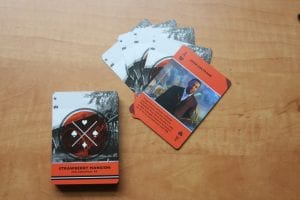
Playing cards feature scenes from the Strawberry Mansion neighborhood. Photo by Melissa Romero
The result of the yearlong process of oral history gathering was a rather untraditional and dynamic cultural asset map—a Strawberry Mansion-themed deck of playing cards, each card highlighting one of the neighborhood’s important community spaces, like the Fletcher Street Riding Club, stables devoted to Black horsemanship that have offered local youth and equestrian activities for more than 100 years, as well as notable residents, such as legendary jazz artist John Coltrane and local organizers like Florie Dotson.
“Like our events at the Hatfield House, ideally, we wanted to provide an experience that could be shared, educational, and simultaneously advocate the promotion of public use in the park spaces,” says Keir Johnston, founding principal of Amber Art & Design. The firm collaborated with Beth Uzwiak of Ethnologica, a research consultancy firm with a focus on community-based ethnography, to work with residents who shared stories and memories about their neighborhood so that future generations will know and share the legacy of the community. These cards were distributed for free at community events like Strawberry Mansion Day, a large annual neighborhood celebration, and through neighborhood organizations. “Rather than something finite, the cards act as an exchange: a single card can prompt memories, enabling stories to grow and build with each new author,” Uzwiak said. “The importance of neighborhood assets and stories, what they mean and the power of their retelling, rests with those who hold the cards.”
What Happens When You Work Together
The work the Fairmount Park Conservancy, Amber Art & Design, and the Community Advisory Committee completed together set the stage for creating a new conceptual master plan for Mander Playground, a beloved park destination for neighborhood residents. Occupying a 22-acre campus in East Fairmount Park, it includes not just a playground, but a recreation center, a sprayground, a swimming pool, football fields, basketball courts, tennis courts, and more. In addition to these amenities, Mander hosts after-school programs, music classes, and community meetings—uses that have far outgrown the constrained space of the recreation center.
Working directly with the Strawberry Mansion Community Development Corporation and the Community Advisory Committee that helped advance the arts-based projects at Hatfield House and beyond, we issued a Request for Proposals (RFP) for design and engagement services at Mander to create a new conceptual plan for the entire 22-acre campus, considering not only current and future uses of the site, but larger issues of circulation, mobility, and accessibility. Listening to feedback from our partners, we issued this RFP only to Black-owned and -led design firms. In addition to outlining the scope of the project, the RFP also included a 1952 poem by Sarah E. Wright, “To some millions who survive Joseph E. Mander, Senior.”
The poem honors Joseph E. Mander, the playground’s namesake and a neighborhood resident who jumped into the Schuylkill River in an attempt to save a young white child. Tragically, both died. The winning proposal by Studio Zewde embraced this piece of history, answering Wright’s plaintive question, “Will not a monument breathe for Mander?” In truth, Mander already is a breathing monument, something Studio Zewde recognized. They drew strongly upon the site’s history, memory, and context, which was enough to convince the selection committee (comprised of advisory committee members and Conservancy representatives) to select them for the project. As part of the design and engagement process, the Conservancy and committee members worked with Friends of Mander to plan three community events that were designed to be more than your average public meeting. These events offered food and beverages, children’s arts and crafts activities, including button-making and screen-printing custom I Heart Mander T-shirts, a DJ, dance lessons, interactive design exercises, and virtual reality goggles, events inspired by many of the programs hosted at the Hatfield House. More than 200 people participated in these hands-on community meetings, which resulted in a comprehensive, phased plan that was completed in early 2019.
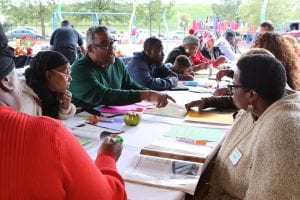
Photo courtesy of Fairmount Park Conservancy
The plan is truly a shared vision for Mander Playground and Recreational Center, centering the priorities of local residents and incorporating feedback from a diverse set of stakeholders, including elected officials and city agencies. It proposes increased and improved amenities, like additional restrooms, better lighting, safer street crossings, and improved circulation throughout the site with new walking and jogging paths. It extends the activity that is currently concentrated along the southeast corner throughout the full 22 acres. By increasing the site’s tree cover and opportunities for intergenerational activity and play, the plan will bring about wide-ranging improvements that address current and future community needs, promote environmental health, and celebrate a deep-seated cultural resilience.
Looking Ahead
While we continue to promote the conceptual master plan for Mander, we are also set to begin a new phase at the Hatfield House. As a community cultural hub, Hatfield will be an anchor for community-driven programming and a place to foreground Strawberry Mansion’s history, culture, and creativity. In deciding to continue and expand the cultural uses at the house, we are investing in the house as an asset and a resource for the neighboring community. It also provides a two-way communication channel to ensure that residents can stay informed about future improvements and programs and continue to have a hand in shaping them.
The evolution of the Hatfield House also requires an evolution in the team guiding the reins. We plan to hire a site manager and a community arts curator who will work in tandem to curate and deliver targeted programs, events, and educational opportunities at the house. We are also putting together a new Curatorial Advisory Committee, inviting back some of the same committee members, but also engaging new members who can bring a diversity of arts and cultural experiences to the table. Whatever the future holds for the Hatfield House, we know that it will be rooted in the community’s greatest asset—its people.



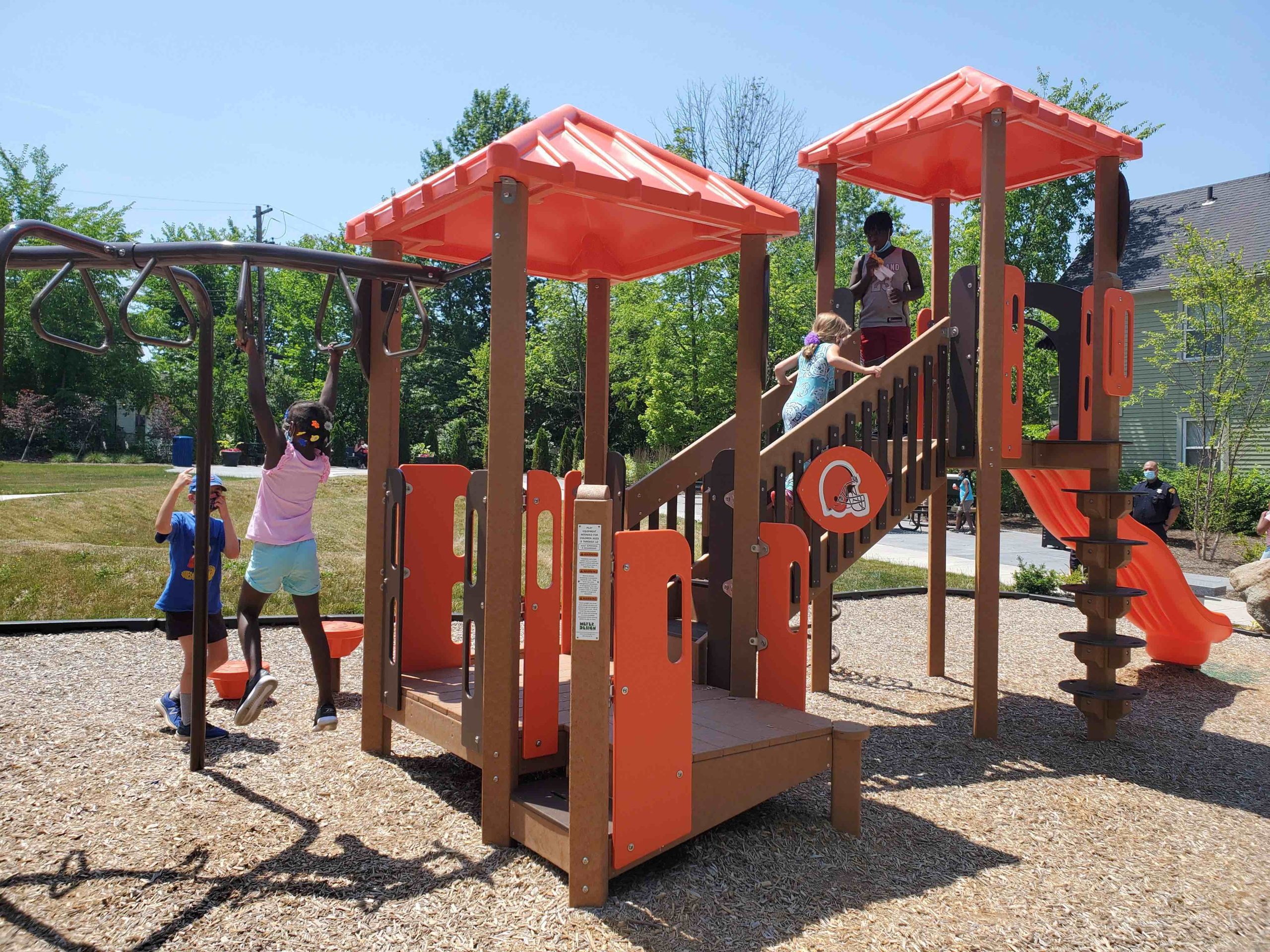
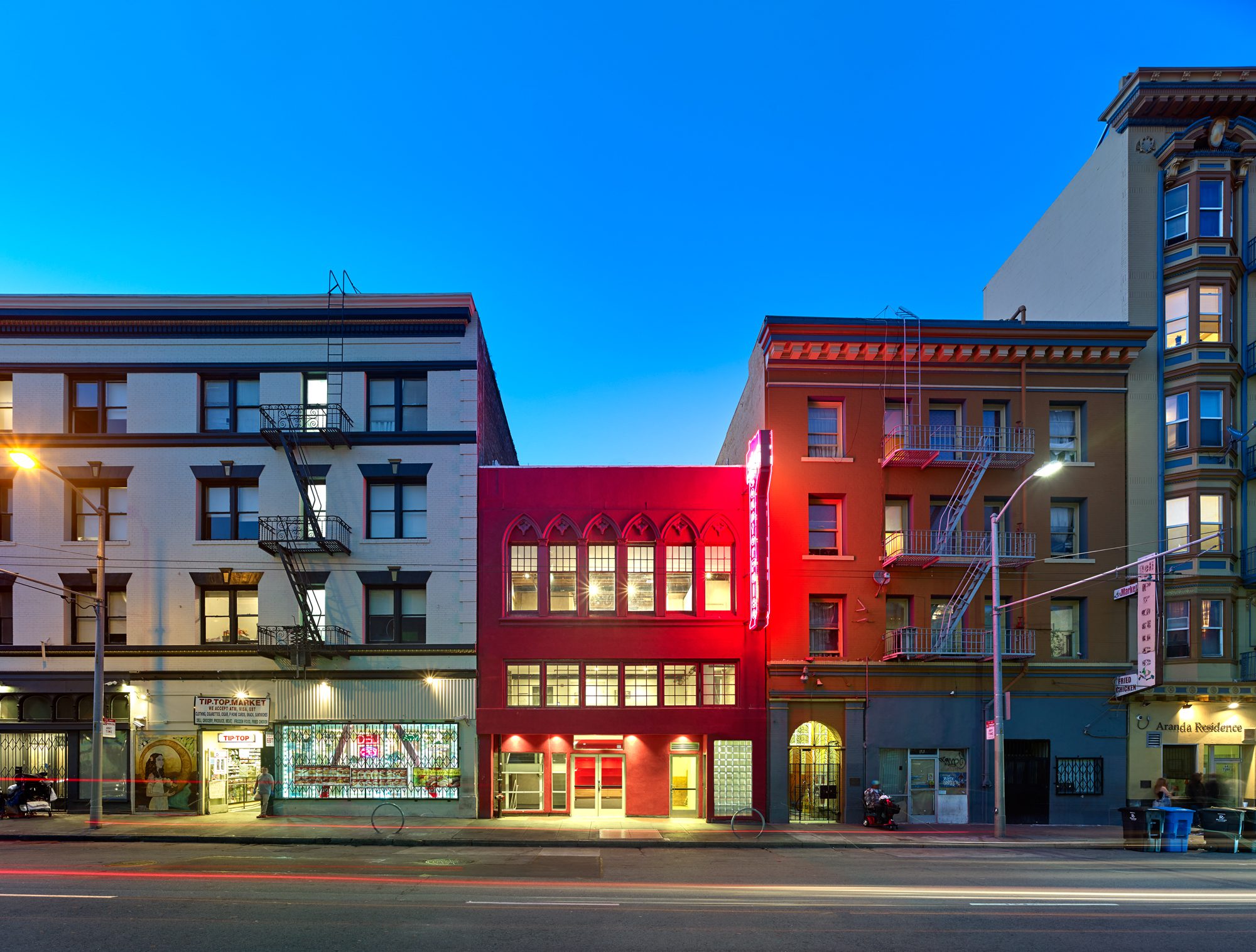
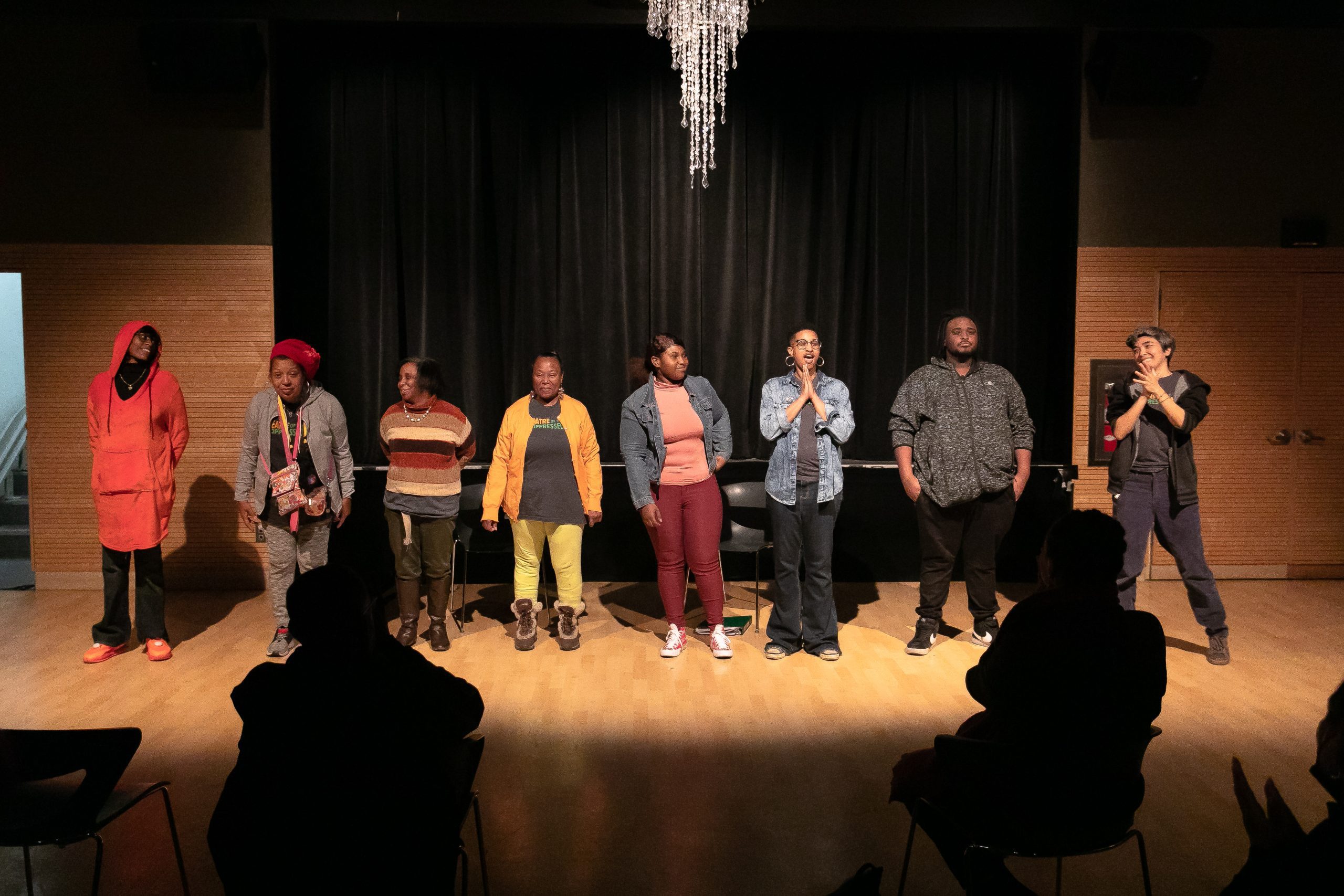
Comments